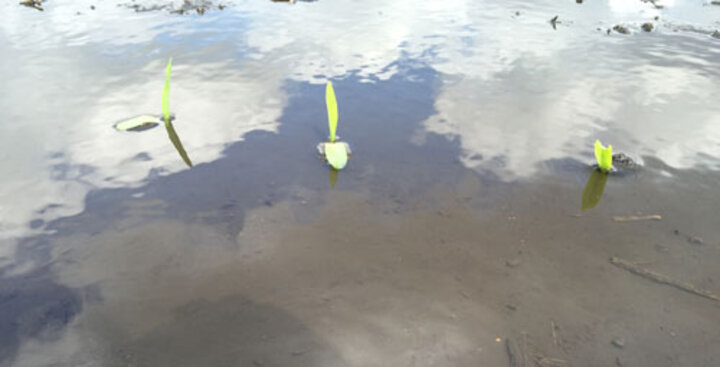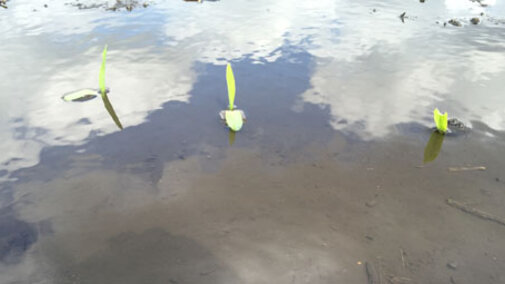Due to May flooding from heavy spring rains, replanting of corn and soybean continues in eastern and southern Nebraska, and elsewhere in the Corn Belt. Recent CropWatch articles have highlighted important considerations for replant decisions (When Weather Delays Planting—Now What?) as well as the impact of heavy rains on soil-applied herbicides (Effect of Excessive Rainfall on Efficacy of Residual Herbicides Applied in Corn and Soybean). Related are two important reminders concerning replanting.
First, the rotation restriction for herbicides applied at first planting will determine if replanting with a different crop would be allowed. For example, if atrazine was applied at planting for corn, in a replant situation you would not be able to switch to soybeans as atrazine restricts soybean planting to the next cropping season.
Second, unlike the many factors that dictate replant decisions, reapplication of herbicides following flooding or heavy rains is dictated by the herbicide label. Even in situations where herbicide efficacy may be reduced due to excessive rainfall, herbicide applications cannot exceed the maximum rate allowed for a single cropping season.

Again, using atrazine as an example, the label allows a total of 5 pints per acre to be applied in a single season. If 4 pt/ac was applied at first planting, you would only be allowed to apply 1 pt/ac at replant. If flooding was severe enough that most of the initial application was lost, the additional 1 pt/ac of atrazine may not be enough to provide season long control. In this situation it would be recommended to use a herbicide with a different active ingredient at replant to ensure season-long weed supression.
Always read and follow pesticide labels, even if you have used the product before. Pesticide product labels undergo scheduled reevaluations and may be changed at any time — even within a season — due to new research and/or regulatory requirements.
Always wear personal protective equipment when handling and applying pesticides. At minimum, this includes a long-sleeved shirt, long pants, gloves, and shoes and socks.
For additional information and product recommendations consult the Nebraska Guide for Weed, Disease and Insect Management.(EC 130).

